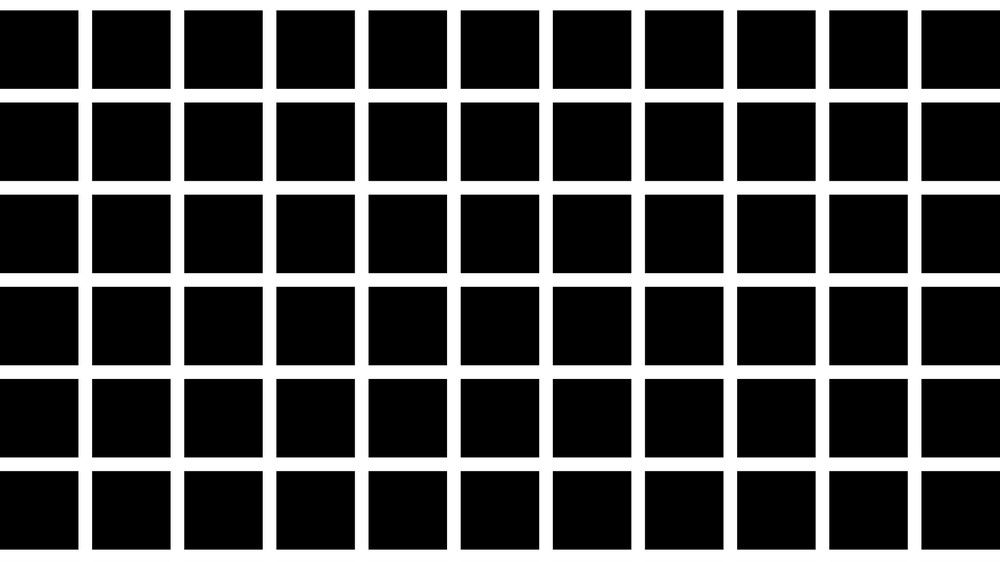
We've studied so many optical illusions here Creative Bloq that sometimes it's easy to forget that the most effective are sometimes the simplest. The example below doesn't involve rotating horses or even any movement at all, but it's no less mind blowing for it.
The optical illusion is merely a grid of black squares on a white background. But this simple pattern has a powerful effect on our perception that can be quite dazzling.

When you look at the image, you'll probably see dark circles appear sporadically at the intersections of the white grid lines between the black squares. At least, I hope you do because that's what I see!
Don't worry it's not just our eyes. Scientists have been transfixed by this optical illusion since way back in the 19th century. According to Oxford Reference, it was first documented by the physiologist Ludimar Hermann in 1870. The illusion is known as the Hermann Grid as a result.
A lot has happened in science since then. We've seen medical breakthroughs, space exploration and more. Yet still nobody is sure why this simple grid pattern is just too much for our brains to comprehend.
You might assume that's because scientists have more pressing things to study and that there isn't much for funding for investigating such trivial matters as optical illusions. But scientists are still studying Hermann's Grid, including boffins at the Ross lab at the University of Pittsburgh.
The best theory so far is that the effect has to do with the response of our eyes' retinal ganglion cells. These are the output pathway of the retina – bridging neurons that transmit retinal input to visual processing centres in the central nervous system. Light excites the ganglion cells. The theory is that the intersections in Hermann's grid look dark because they produce less net excitatory stimulation in comparison to the lines. Whatever the case, it shows how susceptible our eyes and brains are to different visual phenomena.
There are plenty of variations of the Hermann grid illusion about. And the illusion has even been brought up in debates about scroll bar design in UI.
For more mind benders, see the new optical illusion discovered by a Japanese filmmaker that has scientists perplexed.







